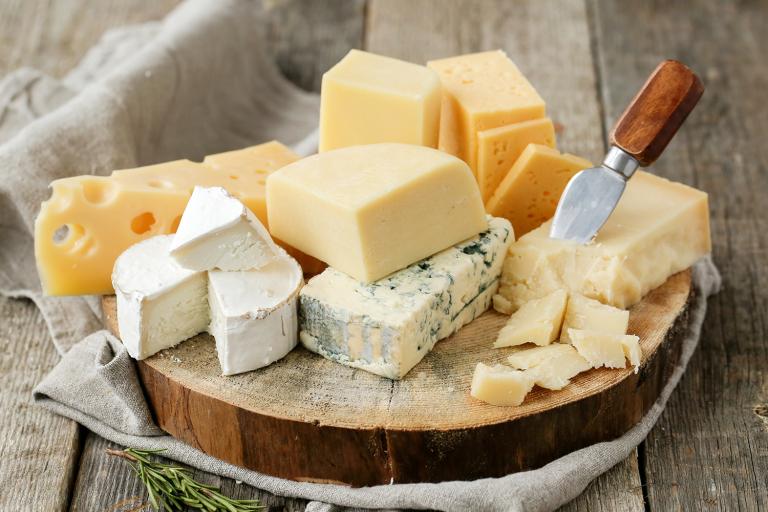Cheese is an almost universally loved food. What better way to showcase its appeal than a beautiful cheese tray? (Of course, a fondue for the holidays is also fun!)
How Much Cheese Is Needed for a Party?
First determine the number of guests. If cheese will be the main food, offer 3 pounds for every 8 people; 6 pounds for every 16; and 9 pounds for every 24. If there’ll be other food at the party, approximately 3 to 4 ounces of cheese per person should suffice.
Buy different flavors and textures for the most variety. Select at least one cheese from each of the four categories:
- Aged (Gouda, aged Cheddar)
- Soft (Camembert, Brie)
- Firm (Manchego, Parmigiano-Reggiano)
- Blue (Gorgonzola, Roquefort, Stilton)
You may also wish to offer various cheeses based on the type of milk they’re made from (cow’s, goat’s, sheep).
How to Serve a Cheese Platter
-
Prepare Ahead of Time
Remove all cheese from the fridge one hour before serving to allow flavors to develop at room temperature.
-
Separate Different Kinds of Cheese
-
Stinky Cheese
Place strong-smelling cheeses on their own platters; offer a separate knife for each type.
-
Hard Cheese
Hard cheeses can be broken into chunks with a fork for a natural look. Or, slice them for an elegant effect.
-
Soft Cheese
Serve soft cheeses with a small spoon or knife for easy spreading.
-
-
Label the Different Varieties
For a stylish presentation, place the cheese on a small and clean chalkboard, and then write the name of each variety near the cheese with non-toxic chalk.
Wrap and tape printed or hand-written strips of paper around toothpicks as a simple and eye-catching way to identify each type.
-
Suggest Pairings
Consider staging the platter to demonstrate various pairings. For example, stack aged Cheddar atop slices of sour Granny Smith apple. Or sprinkle candied pecans on soft goat cheese. Drizzle a blue cheese with honey.
-
Accompany with Carbs
Offer bread and crackers on separate plates or in baskets. Choose flavors that won’t compete with the cheese.
Steer clear of anything with sesame seeds, herbs, or garlic. Breads containing walnuts, olives, or dried fruit make a nice accompaniment, as these ingredients pair well with cheese.
Serve breads and crackers in varying sizes and shapes for visual appeal (bread sticks, baguettes, round and square crackers).
-
Additional Flavors
-
Spicy, Salty, and Sweet
Alongside the cheese platter, or on it if there’s still room, feature an assortment of salty and sweet accompaniments. Offer choices such as:
- fresh fruit
- apples
- pears
- grapes
- dried fruit
- cherries
- apricots
- pears
- apples
- nuts (candied or plain)
- honey
- chutneys
- spicy mustards
- fresh fruit
-
Savory Options
Small bowls of marinated olives, roasted red peppers, and artichoke hearts are popular savory choices.
Consider offering cured meats such as prosciutto and salami. Just be sure to not overcrowd the platter.
-
-
Beverages
Wine is a traditional beverage choice with cheese, but sparkling cider makes a festive, non-alcohol accompaniment.
